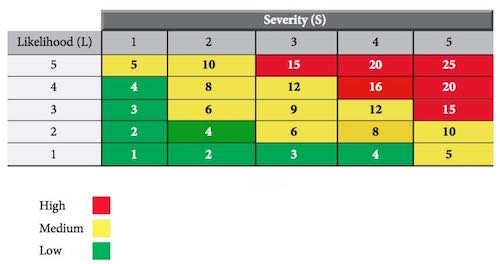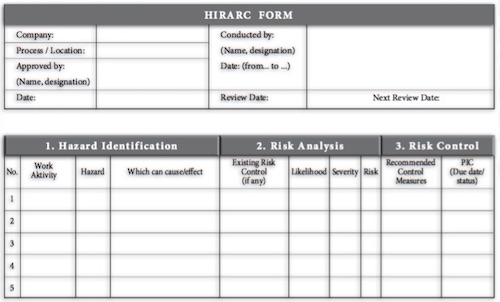Fire occurs when there are three important elements of heat, fuel and oxygen, which is known as the fire triangle. Fires can occur due to negligence of human, mechanical damage, electrical or natural events (lightning) that bind oxygen, fuel and heat. It was a "chain reaction" that requires the presence of these three elements. Therefore we must understand this in order to avoid or reduce the incidence of fires from occurring.
Classes of Fire
Fire can be classified into four, namely: -
- Class A Class A fire is a fire involving ordinary combustible solid materials. Solid material is heated in the flame temperature will release flammable vapours or gases which can cause fires when mixed with oxygen.
- Class B Class B fires are fires involving hydrocarbon liquids or flammable materials or other petroleum products.
- Class C Class C fires are fires involving flammable gases. Gas when mixed with oxygen only takes a spark to start a fire. Usually the fire happened very quickly and sometimes can result in an explosion.
- Class D Class D fires are fires caused by heavy metals. If the metal reacts with oxygen and burns, it will burn rapidly and emit extremely heat. The metal is usually made up of elements of group I and II of the Periodic Table.
Fire Extinguishing Agent
Fire Class | Materials On Fire | Compatible Fire Extinguishing Agent |
A (Solid) | Wood, Paper, Textiles, Debris | Water, Dry Powder, Water Spray |
B (Liquid) | Fuel, Gasoline, Kerosene, Paint And Turpentine | Foam, Dry Powder, Carbon Dioxide, Water Spray |
C (Gas) | Methane, Propane, Butane, Hydrogen, Acetylene | Dry Powder, Carbon Dioxide |
D (Metal) | Kalium, Natrium, Calcium, Magnesium | Graphite Asbestos, Ash Soda, Dry Sand, Dry Powder |
Cause of Fire
The cause of the fire is as follows:
- Installation of electrical wiring did not follow the specifications.
- Incorrect fuses wiring replacement.
- Electrical short-circuit.
- The use of machines those are too long, thus causing overheating.
- Electric sparks.
- The cause of the fire such as matches, lighters, cigarette, mosquito coils and candles.
- Uncontrolled burning such as garbage burning, kitchen fires and hot coals.
- Frictional sparks.
- Chemical reactions.
- Lightning.
- Intentional burning for the purpose of insurance claims, revenge, sabotage or other motives.
Fire Prevention Measures
Fire prevention measures are as follows: -
- Make a plan for a job.
- Reducing the use of combustible materials.
- Store flammable materials in a safe place that is well deserved.
- Ensure gas supply tubes are in good condition.
- Ensure that all electrical equipment switched off when not in use.
- Getting a qualified party to make electrical wire connections.
- In the event of electrical failure should be immediately notified to the parties concerned.
- Do not throw cigarette still burning in the trash.
- Do not let the cooking fire without control or supervision.















